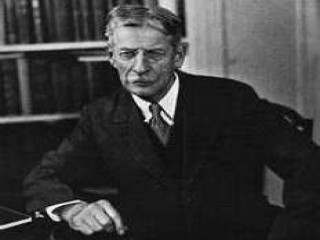
Frank J. Sprague biography
Date of birth : 1857-07-25
Date of death : 1934-10-25
Birthplace : North Adams, Massachusetts, U.S.
Nationality : American
Category : Arhitecture and Engineering
Last modified : 2011-04-27
Credited as : Electrical engineer, and inventor, father of electric traction
Frank Julian Sprague American electrical engineer and inventor, successfully used electricity to power vehicles and is known today as the father of electric traction. His electric motor-driven streetcar revolutionized urban transportation.
Frank Sprague was born in Milford, Conn., on July 25, 1857, but lived with relatives in North Adams, Mass., after 1866. Demonstrating an aptitude for science and mathematics, Sprague secured an appointment to the U.S. Naval Academy in 1874. After graduation in 1878 and 2 years at sea, he pursued his electrical studies relentlessly.
In 1883 Sprague joined Thomas Edison's staff, but he soon withdrew to form the Sprague Electric Railway and Motor Company. He soon marketed a "constant speed" motor for industrial use but subcontracted its manufacture so he could devote himself to electric traction development. In 1887 he contracted to electrify a new street railway in Richmond, Va. Despite having to devise the entire system from scratch, he completed the installation of a 12-mile, 40-car system in 1888.
By 1890 over 200 electric street railways were in operation or under construction; half of these used Sprague equipment, and 90 percent of them were based on his patents. In 1890 the Edison General Electric Company acquired Sprague's business, but Sprague left to establish the Sprague Electric Elevator Company. He developed and installed electric elevators in several New York buildings before selling out to the Otis Elevator Company.
Having worked out a system of multiple-unit control for elevators, Sprague sought to apply it to railways. He realized
that trains made up of individually motorized cars controlled by a single operator had enormous advantages. His multiple-unit system, installed in Chicago in 1897-1898, was adopted generally for subway, elevated, and suburban service. Thus the basis for the modern rapid transit system was complete. Sprague continued to advance the application of electrical engineering. He worked on automatic railroad signaling and elevator control systems, and during World War I he served on the Naval Consulting Board.
Sprague was energetic and resourceful. He was an enthusiastic gardener and enjoyed art and music. Twice married, he was the father of four children. He received many professional honors before his death on Oct. 25, 1934.
















